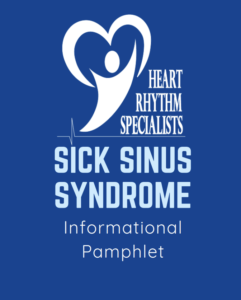What is Sick Sinus Syndrome?
SSS is a disease in which the heart’s natural pacemaker, the sinoatrial (SA) node, malfunctions and is unable to generate a normal heart rhythm, causing the heartbeat to become irregular, resulting in arrhythmias.
How is SSS Diagnosed?
Dr. Yoo will use a combination of
a physical exam, testing, and past
medical history to diagnose the
patient. Testing may include:
- electrocardiogram (ECG)
- stress test
- event recorder
- Holter monitor
- implantable loop recorder
Risk Factors include:
- heart failure
- previous heart attack
- coronary artery disease
- high blood pressure
- sleep apnea
- obesity
- lack of exercise
- older age
Causes of SSS include:
Any disease or condition that damages heart tissue and the SA
node can cause SSS. These include: heart failure, previous heart attack, coronary artery disease, high blood pressure, atrial fibrillation, hemochromatosis, scleroderma, sarcoidosis, amylodosis. Certain medications
such as anti-arrhythmics, digoxin, beta-blockers, and calcium channel blockers, can also cause sick sinus syndrome.
Symptoms of SSS:
Although most people with SSS have mild symptoms, they can
include:
- headache
- chest pain (angina)
- palpitations
- fatigue
- dizziness
- fainting (syncope)
- shortness of breath
- nausea
Treatments for SSS
Treatments include:
- pacemaker implant to help
pace the SA node and regulate
heart rate - medication(s) to help control
abnormal rhythms - blood thinners to prevent blood
clots - treatment of other underlying
conditions - ablation procedure to cauterize
the tissue that is causing the
abnormal rhythms
Additional Resources
